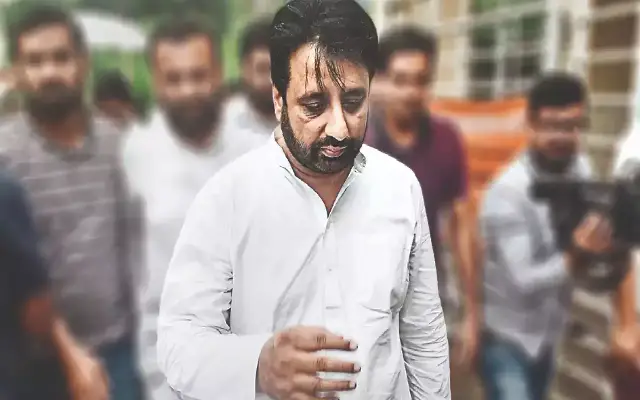
New Delhi: England is all decked up for the Royal wedding and all eyes are on Prince Harry and American actress Meghan Markle. The couple said “I do” to each other today.
For the British calendar, nearly every date has some bloody history associated with it. From anniversaries of violent wars, to rulers who murdered people left, right and centre, British history is filled with dates commemorating some major event or the other – and not necessarily happy ones at that.
In a scenario such as this, finding the perfect wedding date for Harry and Meghan might have been a Herculean task for the people entrusted with it.
And as luck would have had it, May 19 too is not exactly a happy date in the British calendar. But for a people whose history goes back so many centuries, is there ever a date that will be shorn of all associations?
A Blood-Soaked Date
May 19 is the date when Prince Harry’s ancestor Henry VIII had beheaded his fashionable and outspoken wife, Anne Boleyn.
What is an even surprising coincidence is that Prince Harry’s real name is Henry. But it is a matter of respite that British monarchs have travelled miles away from their ancestral traditions of executing wives on count of some suspicion or the other. More? Henry VIII is buried in St George’s Chapel, where Harry and Meghan are tying the knot!
The Washington Post asked Royal historian and Anne Boleyn biographer Claire Ridgway about the date, and she said “it would be tricky to find a date in English history that is not linked to something awful.”
“I don’t think the link to Anne Boleyn came into the equation when picking the date, it would have just been based on what worked out best with the busy lives of the royal family,” Ridgway added.
Who was Anne Boleyn?
Anne Boleyn, the second wife of King Henry VIII is remembered for being instrumental in the beginning of the English reformation. Henry’s marriage to her and then her beheading is what eventually led to the Church of England breaking away from the Roman Catholic Church.
In 1522, Anne was given a position in the court as the maid of honour of Catherine of Aragon, the first wife of Henry VIII.
In 1526, King Henry VIII began his pursuit of Anne Boleyn. He wanted her to be a part of his harem. Anne, however, had seen her sister Mary being Henry VIII’s mistress and refused to be one.
Consumed by his desire for Anne, Henry VIII soon had only one objective in life: to annul his marriage to Catherine of Aragon so that he could marry Anne Boleyn.
When Pope Clement VII refused to annul the marriage, the Church of England began breaking away from under the Roman Catholic authority.
In 1532, Anne was granted the Marquessate of Pembroke by Henry VIII.
Marriage to Henry VIII
Henry VIII and Anne Boleyn had a secret marriage in 1532, and it was followed by a formal marriage the next year. The newly-appointed Archbishop of Canterbury, Thomas Cranmer, soon announced Henry and Catherine’s marriage null and void and validated his marriage with Anne.
The Pope ordered excommunication of Henry VIII and Thomas Cranmer and it led to the first break between the Church of England and Rome. The Church of England was brought under the King of England. In 1533, Anne was announced the Queen of England.
She went on to give birth to the future Queen Elizabeth I.
Over the next three years, Anne had three miscarriages and Henry’s desire for a son made him look elsewhere. He began courting Jane Seymour and needed a way to get rid of Anne Boleyn.
The Execution of Anne Boleyn
In April 1536, Henry VIII had Anne tried for high treason. She was arrested and sent to the Tower of London where she was tried before a jury consisting of Henry VIII’s peers. Anne was found guilty in May 1536 and sentenced to death by burning.
Four days later, on May 19, Anne was executed after Henry commuted her sentence from burning to beheading.
William Kingston, the constable of the tower, wrote, “This morning she sent for me, that I might be with her at such time as she received the good Lord, to the intent I should hear her speak as touching her innocency alway to be clear. And in the writing of this she sent for me, and at my coming she said, ‘Mr. Kingston, I hear I shall not die afore noon, and I am very sorry therefore, for I thought to be dead by this time and past my pain.’ I told her it should be no pain, it was so little. And then she said, ‘I heard say the executioner was very good, and I have a little neck,’ and then put her hands about it, laughing heartily. I have seen many men and also women executed, and that they have been in great sorrow, and to my knowledge this lady has much joy in death. Sir, her almoner is continually with her, and had been since two o’clock after midnight.”
On May 19, Anne’s ermine mantle was removed, she lifted her headdress, and arranged her hair in a coiffure. She kneeled and one of the ladies there put a blindfold over her eyes. Anne is said to have knelt upright, keeping with the tradition of French executions.
Her beheading comprised a single stroke. The stroke that has rattled historians for centuries after, leading them to a general consensus that the charges against Anne Boleyn – which included adultery, incest and plotting to kill the King – were all unconvincing.
India Today


















